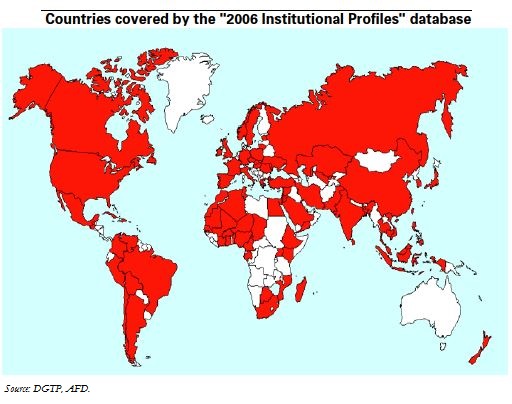Trésor-Economics No. 24 - A new database for "measuring" institutions
The pre-eminence of institutional themes in studies on long-term growth, since the mid-1990s, raises the question of how to measure them. Many indicators have emerged aimed at measuring the degree of economic freedom, observance of property rights, the level of corruption, press freedom, etc...
The "2006 Institutional Profiles" database, compiled by the French Ministry of the Economy, Finance, and Employment (Minefe) and the French Development Agency (AFD), offers a battery of 356 variables for 85 developing and developed countries accounting for 90% of the world's GDP and population. The first version of the database, published in 2001, covered 51 countries. The third survey will take place in 2009. The present document sets out the method of compilation and findings of an initial statistical exploration of the database.
"2006 Institutional Profiles" makes a number of choices distinguishing it from other institutional databases. Its prime focus is on analysing the linkage between institutions and development, supplying indicators serving to explore the mainsprings of economic take-off or impediments to growth.
Its aim is to stimulate debate and inform decision-making, not to produce rankings. It covers a very broad range of institutional issues, looking beyond the question of "good governance". "2006 Institutional Profiles" is constructed transparently: the entirety of the component data can be accessed. Like any other database dealing with institutions, however, this one makes no claim to be perfectly objective, but potential biases are spelled out.
An initial exploratory analysis of the data shows that two factors may serve to characterise a country's institutions, namely the degree of formalisation of rules and procedures, and the relative role of the State.
